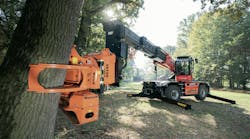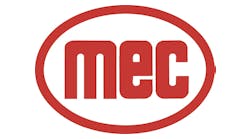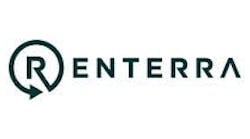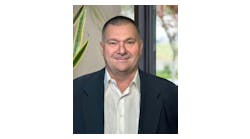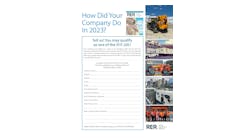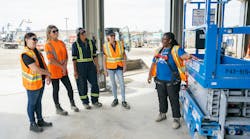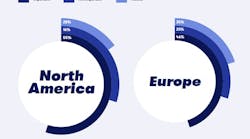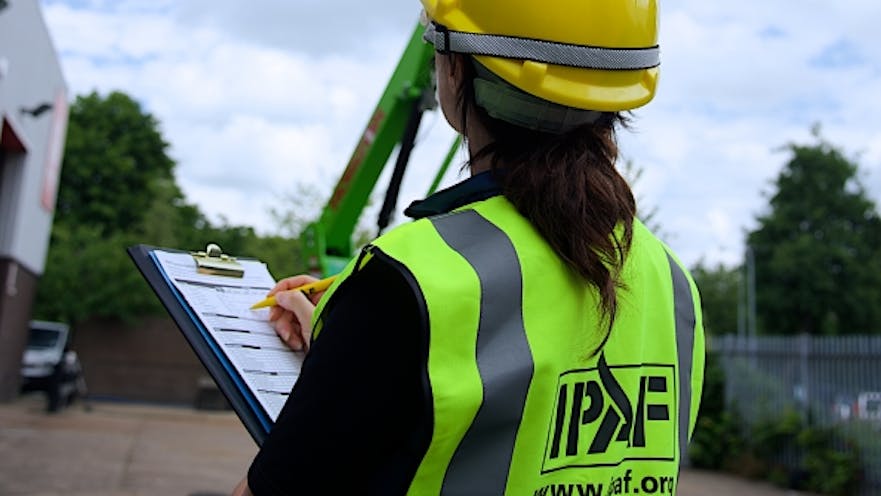New ANSI standards go into effect later this year. Rental companies should already be thinking about what they need to know, how they need to change training and customer education, and what their plans will look like.
The new ANSI Standards go into effect in December this year, and they bring a whole host of new improvements to the industry. Changes to the design, safe use and training requirements of mobile elevated work platforms (MEWPs) will most certainly affect the way you manage, operate, train and educate your team and customers.
According to the International Powered Access Federation, the association that serves as the expert voice for safety and training in the global powered access industry, the most immediate aspect of the new standards is the need for awareness and education in order to successfully assimilate the changes into your business.
“The new ANSI Standards are a positive change for the industry overall,” says Tony Groat, IPAF’s North America regional manager. “But rental store owners need to be asking themselves four key questions as soon as possible: What do I need to know? What do we need to change in terms of training? How can I educate my customers? And what will my implementation plan look like?”
The new standards aim to ensure the safe use of MEWPs – a new acronym within the standards for what were formerly known as AWPs – throughout the industry. The standalone safe-use and training standards will help to increase focus and understanding for users and their workers, including supervisors, operators and occupants.
“One of the most important things to understand about the new standards is how they will impact equipment design, safe-use and training,” says Groat.
The new design requirements have introduced load-sensing, a new indoor-only design option, and increased guardrail height.
“The design changes are better for both users and rental companies,” says Brad Boehler, president of Skyjack. “Lifts now have greater stability requirements and will be less susceptible to allowing overloads.”
Platform load-sensing is one of the biggest changes manufacturers are incorporating into their equipment. Now an alarm will sound, and functionality will be limited if the platform is overloaded. It allows manufacturers to limit loads in the platforms to the designed rated loads.
“There is a mix of old and new equipment in the marketplace right now, and sometimes the only way you can tell if equipment has the new load-sensing feature is to actually open it up and look; it’s not an ideal situation,” says Jeff Stachowiak, director of safety training, Sunbelt Rentals.
“New MEWPs with load sensing will function differently than existing models, so users will have a learning curve,” says Groat. “That is why IPAF is offering a load-sensing sticker, to provide greater visibility of this feature on new machines.”
The safe-use standard specifies requirements for application, inspection, training, maintenance, repair and safe operation of equipment and is predominantly intended for owners, users, supervisors and operators; the training standard provides methods and guidelines to prepare MEWP training materials, defines administrative criteria and delivers elements required for proper training to implement the safe-use standard requirements and is predominantly intended for individuals or companies offering training.
The safe-use standard now includes the need for developing a MEWP-specific safe use program that includes a risk assessments and rescue plan.
“Risk assessment is one of the standards’ positive changes, and this will help users understand what the risks are,” says Stachowiak. “Many users are not aware of the potential hazards of operating lifts. I’ve had sophisticated customers who didn’t know lifts weren’t electrically insulated, for example.”
Training requirements have been expanded to include methods and guidelines for administration, training materials and delivery. The new standard clearly defines the content in theory and practical training; trainer qualifications; and acceptable environments for training, testing and documentation. It also improves the requirements of standardized training, while the addition of occupant knowledge into operator training and new supervisor training expand the knowledge required for safe use.
“Safe use goes beyond the machine,” says Boehler. “There is added responsibility for the operator and occupant to be trained.”
“Because the new standard is more detailed, it raises the bar for standardized training, and makes training less subjective,” said Groat. “This levels the playing field and means that the same training will be delivered to all operators.”
One of the most significant changes to the standards is the familiarization requirement has changed from “provided” to “offered” by the dealer to the customer.
“The familiarization requirement was previously in conflict with the dealer’s responsibility to offer training but increased responsibility to provide familiarization. It is the responsibility of the user to ensure their personnel are trained and familiarized,” says Groat. “Additionally, rental dealers deliver at all hours of the day and late at night, but they had a strict obligation to familiarize the customer at the point of delivery. The language is more reflective of the real situation now. Dealers must offer familiarization and deliver it only if the client requests it.”
“The new standard states that dealers need to offer familiarization and training – but you don’t have to offer it yourself, you can direct your customers to a third party,” says Stachowiak. “Now dealers simply need to make it available by offering or directing and the responsibility lies with the renter of the equipment.”
What you need to do
With the implementation of new standards, there are new responsibilities for rental companies.
“The new standards ramp up the sophistication of lifts. It’s not a smooth transition, it’s a jump,” says Stachowiak. “You will need to figure out what this means for your company. You’ll need to be explaining these changes to your maintenance staff, your customer service, and the biggest gap is with consumers.”
“Rental houses need to be thinking in terms of timelines – and asking questions like ‘What do we need to do to be compliant, and how are we going to maintain compliance?’” says Groat. “We are trying to get the word out that the clock is ticking – December 2019 is when everyone must comply with the new standards; it is not the suggested point when you should start to consider changes.”
Groat suggests that the best place to start is to read the standard and draft an implementation plan for your own business. “Each company will be different in their implementation, but once you read the standard and understand how it applies to your situation, you can start devising a timeline for execution,” he said.
ANSI Answers
Most aerial manufacturers including Skyjack, Genie, JLG and others have created white papers to help dealers through the upcoming months of transition and have staff on hand to help advise you.
IPAF is available to help as well. “We listen and echo the collective voices of the industry and helped draft the harmonized industry standards,” said Groat. “As an association, we are focused on actively engaging with all industry stakeholders to raise awareness and understanding of the changes. We publish papers, conduct conferences, and offer expert resources to answer questions.”
IPAF has published white papers covering the key changes you can use to educate yourself. They have also developed operator and supervisor online training courses which can be used to comply with the new standards. These are supplementary to the standards themselves, which should be reviewed in full as soon as possible. IPAF is also offering a workshop in July called Innovate where you can meet with members throughout the access industry and follow up on any remaining questions you may still have.
“The new standards bring an increase in overall safety,” says Boehler. “They bring us closer to a global standard for machinery, measured platform loads, more stringent wind speed requirements, and enhanced stability.”
“These are all positive changes, but implementing these changes will take a commitment from leaders of rental businesses, as well as an understanding of the standards themselves,” says Groat. “The updates to the ANSI A92 Standards are aimed at making our industry safer and more efficient, so why would you wait to implement them? The entire industry needs to be retrained, and that is going to take time. IPAF is here to help.”
To learn more about IPAF and to download white papers, please visit www.ipaf.org. You can also learn more about IPAF’s Innovate conference here: em.ipaf.org/web/innovate2019
Melinda Zimmerman-Smith is president of Lighthouse Communications
